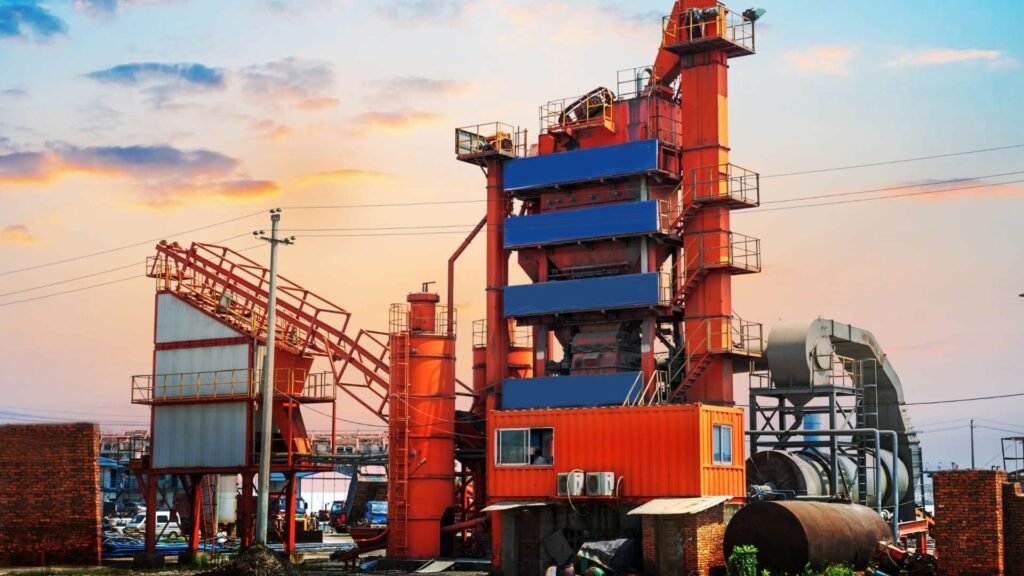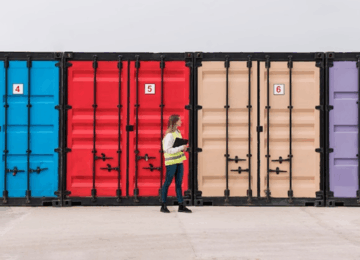Understanding the Art and Science of Concrete Pouring
The Chemistry Behind Concrete: What Makes It So Strong?
Concrete is often revered as one of the most durable materials in construction, but what exactly contributes to its immense strength? At its core, concrete is a composite material made up of water, cement, aggregates, and, in some cases, additional admixtures that enhance its properties. The dynamic interaction between these components is what gives concrete its strength, with the hydration process being a critical factor. When mixed, the cement reacts with water through a chemical process known as hydration. This reaction converts the wet cement paste into a solid structure, allowing the particles to bond and solidify, creating a network that can withstand significant loads.
Furthermore, the type of aggregates used whether they are fine (sand) or coarse (gravel) also affects the concrete’s strength and performance characteristics. For instance, lighter aggregates can be utilized to make lightweight concrete, which is advantageous for certain construction applications, while heavier aggregates are preferred in structural concrete for their ability to bear more substantial loads. Understanding these variances not only provides insights into the mechanics of concrete but also informs decisions regarding mix design tailored to specific project requirements.
Tools of the Trade: Essential Equipment for Perfect Pouring
Ensuring a flawless concrete pouring experience relies heavily on the right tools and equipment. At the forefront of these tools are mixers, which blend the components to achieve the desired consistency be it for a heavy-duty foundation or a sleek driveway. Ready-mix trucks, loaded with pre-mixed concrete, are a common sight at job sites, ensuring that fresh concrete is delivered directly to the pouring location. These trucks are equipped with rotating drums that keep the concrete in motion, preventing premature setting. However, for smaller projects, portable mixers might be employed for their convenience.
Other essential tools include vibrators, screeds, and trowels. Vibrators ensure that air pockets are eliminated, thereby enhancing the density and durability of the concrete. Screeds are instrumental in leveling the poured concrete, providing a flat and even surface that’s crucial for aesthetic and structural integrity. Trowels are then utilized to finish the surface, whether it be for a smooth finish or textured appearance. Each of these tools plays a vital role in the pouring process, and using them effectively can make a significant difference in the final product.
The Role of Weather: How Conditions Impact Your Project
Weather conditions exert a tangible influence on concrete pouring processes, and understanding this impact is paramount for successful implementation. Extreme temperatures can drastically alter the curing process. In hot weather, concrete can set too quickly, leading to insufficient hydration and potentially diminishing strength. Measures such as using retarders chemical additives that slow down the setting process can be taken to mitigate these challenges.
Conversely, pouring concrete in cold weather poses its own set of risks. Freezing temperatures can freeze the water in the mix, thwarting hydration and leading to incomplete hardening of the concrete. In such instances, it’s essential to incorporate heating elements or insulated blankets to maintain appropriate temperatures during curing. Additionally, ambient humidity levels can also play a role; low humidity can result in rapid evaporation of water from the surface, leading to cracks and surface defects. Thus, monitoring and adapting to the weather conditions is not just important but essential to ensuring a successful pour.
Choosing the Right Type of Concrete for Your Specific Needs
From Standard Mix to Specialty Concretes: What’s Best for You?
The choice of concrete mix is pivotal in determining the performance and durability of a project. Standard mix, often known as “normal concrete,” is suitable for most applications, delivering a good balance of strength and durability for structural components. However, certain projects may necessitate specialty concrete mixes designed for specific uses high-strength concrete, for example, is fortified to withstand more significant loads and is ideal for high-rise buildings, bridges, and other critical infrastructures.
Furthermore, lightweight concrete may be favored for applications where weight reduction is necessary without sacrificing the structural integrity, such as precast panels or roofing systems. Each type of concrete serves a specific purpose, and understanding the nuances between them is crucial. Engaging professional concrete pouring services in Sarasota can provide tailored advice based on local building codes, soil conditions, and project goals, ensuring that you choose the right mix for your specific needs.
Eco-Friendly Options: Sustainable Concrete Solutions for the Modern Builder
As environmental concerns grow, the construction industry is increasingly prioritizing sustainable practices, and the use of eco-friendly concrete is at the forefront of this movement. One innovative option is the use of recycled aggregates, where crushed concrete and other waste materials are repurposed as part of the concrete mix. This approach not only minimizes waste in landfills but also reduces the carbon footprint associated with extracting natural resources.
Additionally, using supplementary cementitious materials like fly ash or slag can enhance the durability of concrete while reducing the amount of Portland cement required in the mix. Such alternatives reduce resource consumption and improve the overall environmental performance of concrete structures. Furthermore, many modern concrete formulations incorporate additives designed to improve thermal efficiency, contributing to energy savings over a building’s lifespan. By choosing eco-friendly concrete options, builders not only help reduce environmental impact but also often enjoy cost savings through innovative materials and technologies.
When to Consider Decorative Concrete: Elevating Your Project’s Aesthetics
When looking to enhance not just the function but also the aesthetics of a project, decorative concrete emerges as an excellent choice. Decorative applications can transform mundane surfaces into eye-catching features. Techniques like stamping, staining, and polishing can achieve diverse textures and colors that mimic natural stone, tile, or even brick. These finishes are increasingly popular for driveways, patios, and commercial spaces, allowing for creativity without compromising on durability.
Moreover, decorative concrete not only elevates the visual appeal but can also add value to a property, making it a worthwhile investment for homeowners and builders alike. The flexibility in design means that the concrete can harmonize with architectural styles, whether it’s contemporary, rustic, or traditional. When considering decorative concrete, it’s wise to consult with experienced professionals who can provide insights on the best techniques and approaches to fit the intended look and function of your project.
Steps to a Flawless Concrete Pouring Experience
Pre-Pour Preparations: Setting the Stage for Success
Before the concrete is poured, meticulous preparation is paramount. This phase involves site evaluation, formwork construction, and ensuring appropriate drainage. The site must be cleared of debris, vegetation, and any other materials that could compromise the stability and integrity of the concrete. Proper formwork is essential; it acts as a mold for the concrete and should be sturdy enough to withstand the weight of the pour without collapsing or warping.
Additionally, considerations such as reinforcing steel known as rebar or mesh are necessary for enhancing the tension strength of the structure. It must be placed correctly within the forms based on the specifications outlined in engineering documents, guaranteeing that the concrete will perform well under tension. Beyond physical preparations, the pour schedule must be strategically planned to ensure that all team members are coordinated and that the concrete’s curing conditions are optimal, increasing the chances of a successful outcome.
The Pouring Process: Techniques for a Smooth Finish
The actual pouring process is where all preparatory work culminates, and skillful techniques can make a significant difference. Properly mixing and transporting the concrete to the site is key, as any delays can lead to premature setting, which compromises the quality. Once at the site, the concrete should be poured in controlled layers, filling the forms and ensuring that air pockets are eliminated using vibrators. This process enhances the density and durability of the final product.
Screeding follows the pour, which involves leveling the surface to provide a flat finish. This is often accomplished with a piece of wood or metal dragged across the top of the forms, creating a clean, even plane. After screeding, troweling may be employed for a smooth finish, whether manual or mechanized, based on the project’s scale and desired texture. Timing is crucial here, as waiting too long can lead to difficulties in achieving the perfect finish. Ensuring that the entire team is synchronized during this phase can lead to a seamless pouring experience.
Post-Pour Care: Ensuring Longevity and Durability
Concrete requires care immediately after pouring to ensure its longevity and performance. Curing, the process of maintaining adequate moisture and temperature in the concrete, is vital for proper hydration. This can involve covering the concrete with wet burlap, plastic sheeting, or curing compounds that form a moisture-retaining film. The curing period can vary but generally lasts for at least seven days, allowing the concrete to achieve optimal strength.
Additionally, post-pour inspections are necessary to detect any surface imperfections, cracks, or issues that may need addressing. If any problems arise, it’s crucial to consult with professionals who can recommend the best repair strategies. Remember that the maintenance of the concrete begins right after the pour, and continued care and regular maintenance throughout the lifetime of the structure will keep it looking good and functioning effectively for years to come.
Why Sarasota Residents Trust Us for Their Concrete Projects
Local Expertise: Understanding the Unique Sarasota Landscape
Local expertise is a game-changer when it comes to concrete pouring services. Understanding Sarasota’s unique climate, soil conditions, and building codes is essential in crafting successful concrete solutions tailored to local demands. The warm, humid subtropical climate presents specific challenges, such as potential rapid evaporation, which requires specialized techniques during pouring and curing. Family-owned and established within the community, our team brings years of local experience, allowing us to navigate these challenges efficiently while ensuring compliance with local regulations.
Furthermore, knowledge of the regional landscape aids us in recommending the most suitable concrete solutions, from residential applications to commercial projects. We ensure that every project not only meets aesthetic expectations but also conforms to the performance needs dictated by Sarasota’s environment.
Client Testimonials: Real Experiences from Our Satisfied Customers
Nothing speaks louder than the words of satisfied clients. We take pride in our track record of delivering high-quality concrete pouring services that consistently exceed client expectations. From tailored consultations to on-time project completions, our commitment to client satisfaction remains unwavering. Feedback highlights our punctuality, professionalism, and the care we put into every project. Customers often commend our team’s responsiveness and willingness to address questions throughout the process, creating a collaborative experience that leaves lasting impressions.
Testimonials capture various projects, from intricate decorative concrete work to extensive commercial slabs, showcasing our versatility and professionalism. These testimonials serve not only as a testament to our skills but also as a reflection of our dedication to customer service an aspect of business we view as equally significant as concrete quality.
Our Commitment to Quality: Standards That Set Us Apart
Quality is the cornerstone of our approach to concrete pouring services. Our commitment begins with carefully sourced materials that meet stringent industry standards. We work with established suppliers who prioritize quality and sustainability, ensuring that every mix meets or exceeds performance expectations. Our team includes skilled technicians who possess detailed knowledge of concrete science, allowing them to oversee both mixing and pouring processes to minimize the potential for errors.
Furthermore, we adhere to rigorous safety protocols and best practices that not only protect our crew but also ensure a safe environment for our clients and their properties. Through continuous training and professional development, we stay updated on the latest techniques and technologies in concrete work, enabling us to deliver innovative solutions that distinguish us in the Sarasota market.











